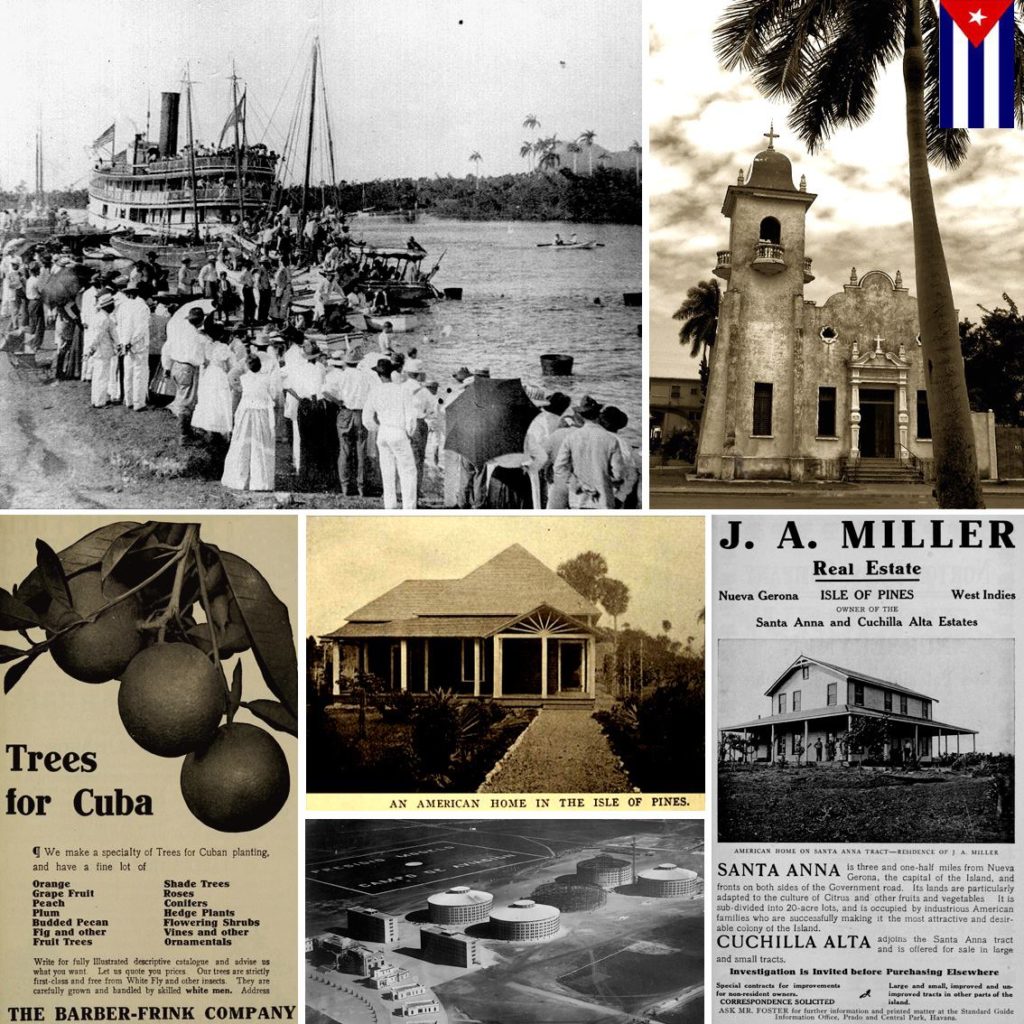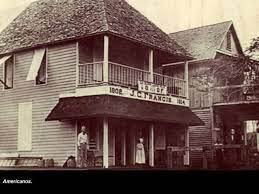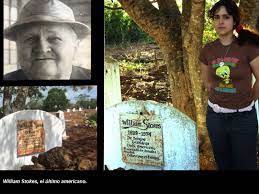LA ISLA DE PINOS, CUBA (HOY ISLA DE LA JUVENTUD): UN SUEÑO NORTEAMERICANO OLVIDADO
En su segundo viaje al Nuevo Mundo, Cristóbal Colón descubre la isla y la bautiza con el nombre de “Evangelista”. Olvidada por España y sus gobernadores en Cuba, es el corsario Francis Drake quien en 1596 , un siglo más tarde, la utiliza en la época de sus aventuras por las Antillas.
La Isla de Pinos, llamada ‘Siguanea’, ‘Camaráco’ y ‘Guanaja’ por sus primeros habitantes, posteriormente se ha conocido como ‘Isla de las Cotorras’, ‘Colonia Reina Amalia’, ‘Isla de los Piratas’ e incluso ‘Isla del Tesoro’. En 1627 es mercedada al capitán Hernando de Pedroso, quien posteriormente cede las propiedades a sus sucesores, que solo mediante su venta o intercambios obtuvieron beneficios, ya que ninguno se ocupó personalmente de ellas e incluso muchos incluso ni la conocieron.
La isla continuó casi olvidada y poco habitada hasta que en 1822 un aventurero llamado Pepe el Mallorquín, junto a un grupo de bandoleros, se adueñó de la isla. Los españoles no les dieron importancia al hecho y fueron los ingleses, con dos goletas, quienes se enfrentaron con dichos aventureros. Motivado por este incidente, el gobierno inglés notificó al de España que guarneciera la isla o la abandonara, en cuyo caso Gran Bretaña la ocuparía. Razón suficiente para que desde Madrid se diera la orden al capitán general Francisco Dionisio Vives para el reconocimiento definitivo de la isla y sus posibilidades estratégicas militares.
El comisionado del capitán general se dirigió a la pequeña población fundada por Andrés Acosta, a unos nueve kilómetros del embarcadero en donde residía Clemente Delgado, consiguiendo que éste le cediese al Estado una legua de terreno para fundar una población. La repartió gratuitamente, distribuida en solares, con la obligación de que edificaran viviendas en el plazo de un año. Así quedó fundada Nueva Gerona.
En el año 1864, según el Censo de aquella época, la Isla tenía una población de 2,067 habitantes y constituyó su Ayuntamiento el 19 de Agosto del mismo año.
LLEGAN LOS NORTEAMERICANOS A ISLA DE PINOS
Después de terminada la Guerra y con la llegada de los primeros norteamericanos, sobre todo a partir de 1901, convocados por Charles. M. Johnson con el interés de promover la fundación de nuevos poblados en el territorio, se modificó tanto su cuadro físico como social, permitiendo que la Isla de Pinos se distinguiera del resto de la República, dado su alto nivel de concentración en un territorio económico tan pequeño con respecto al todo el país.
La agricultura citrícola pinera fue introducida y desarrollada principalmente por los norteamericanos, que aplicaron tecnologías y alto nivel de mecanización con una infraestructura tecnológica para todo el ciclo productivo y su comercialización. Con el apoyo de su gobierno comienzan a funcionar numerosas firmas. La primera, en 1900, sería la “The Isle of Pines Company”, después le siguieron “The Santa Fe Land Company”, “The Almacigos Spring Land Company”, “The Isle of Pines Development Company” y otras. Pronto tuvieron su órgano de prensa: “The Isle of Pines Appeal”.
Los colonos norteamericanos trataron de imponer un modelo de urbanización característico de su cultura. Las nuevas poblaciones sobresalieron por su arquitectura muy diferente a la española. Eran típicos “bungalows” construidos en madera, incluyendo el piso y asentadas sobre pilotes, techo alto a dos aguas, ventanas de cristal y un amplio portal techado alrededor. Esta forma de construir incluyó hoteles, bancos, comercios, etc., lo que le otorgaba al conjunto unas características peculiares.
Entre los pueblos fundados podemos citar a “Columbia”, el más antiguo de todos, situado en la parte norte de la Isla y que su arquitectura además tenía las características de la arquitectura inglesa. Alrededor de 1910 ya disponía de dos tiendas mixtas, correo, escuela, varias organizaciones sociales y un hotel que ofertaba opciones para la pesca. Fue destruido por el ciclón del año 1926
“McKinley” fue otro de los primeros poblados y debe su nombre a que sus fundadores procedían de Búfalo, lugar donde fue celebrada en 1901 la famosa Exposición Universal, durante la cual fue asesinado el presidente de Estados Unidos, William McKinley. Fue construido siguiendo el modelo de su lugar de origen y fabricaron sus viviendas con troncos rústicos de árboles.
En “Santa Bárbara de Las Nuevas” se establecieron a partir de 1902 edificando un poblado al estilo nórdico que contó con un hotel de 40 habitaciones, además de tiendas mixtas, establo, matadero, dos casas para envasar vegetales, club social, galería de arte y natatorium en los baños termales de El Rosario, cercanos al poblado. En 1920 la población era de 400 habitantes, de los cuales 203 eran norteamericanos, y su cultivo principal era el de naranjas y toronjas. El total del área cultivada era de 1061 acres, valorados en 1 659 800.00.
En “Los Indios” las casas fueron construidas al estilo típico del oeste norteamericano. De gran confort en su interior, generalmente se pintaban de blanco, amarillo y carmelita. Aquí radicó la Cañada Land and Fruit Co, propietaria de unos 23 mil acres de tierras. Aqui se encontraba la Aduana, uno de los puertos que comunicaba directamente a la Isla de Pinos con New York y otras poblaciones de Estados Unidos y las Antillas Menores.
“San Pedro” fue levantado en tierras pertenecientes a The Witney Land Co.y The Columbus Isle of Pines Co. Contaba con un ferrocarril que comunicaba al pueblo con la ensenada. Es aquí donde fue construido, por norteamericanos, el primer alcantarillado de Isla de Pinos, en 1911. Bibijagua que conocemos por su famosa playa de arenas negras, fue fundada fundado por la Columpo Bay Land Co.
Nueva Gerona y Santa Fe, fueron los principales centros urbanos de la localidad y allí radicaron las principales oficinas de sus respectivas compañías y negocios, así como algunas instituciones de carácter cultural u otras. “Old Virginia Café”, fue un negocio de bebidas y licores, además del Club Americano, el Hotel Americano, el Hotel Burnsilde, entre otros.
Los colonos norteamericanos tuvieron mucho éxito en el cultivo de cítricos, el que desarrollaron hasta obtener ganancias extraordinarias por encima de otros rubros alimentarios, que ni siquiera eran producidos para cubrir las necesidades del consumo local.
En 1925 la inmensa mayoría del territorio pinero era propiedad de estadounidenses, los que se dedicaron a explotar extensas plantaciones de cítricos y frutales, que con el tiempo llegaría a ser el principal sostén económico de la isla.
Pero al dictaminar el Tribunal Supremo de los Estados Unidos, en 1907, que la isla era territorio cubano y nunca había formado parte del país norteño, se fueron acabando los ánimos de los colonos, por lo que muchos vendieron sus tierras y regresaron a su país de origen, por lo que fueron pasando tierras y negocios a manos cubanas o españolas.
Los hoy casi abandonados “Cementerios Norteamericanos” en la Isla atestiguan el número de los estadounidenses que vivieron, trabajaron y murieron en esta pequeña isla antaño refugio de piratas, después colonia penal y posteriormente una fuente de productos agrícolas para vender en Cuba y en Estados Unidos.
La lápida con el nombre de Estefania Koenig y otra con la de William Stokes -que era un bebé cuando sus padres llegaron a Cuba, casó y crió una familia en el pequeño poblado de La Gloria City toda su vida, incluso después de que sus hijos emigraran y su negocio quebrara- ellos fueron los ultimos norteamericanos originales que murieron en la isla, esto nos demuestra la longitud de la presencia norteamericana y lo que queda; los mudos testigos y las ruinas de sus negocios, escuelas, hoteles y viviendas, así como los restos de una mina de oro.
Un siglo después de aquel capítulo, de aquellos pioneros de principios del siglo XX sólo quedan sus nombres en las tumbas del cementerio que un día estuvieron a punto de cumplir un sueño en una nueva tierra.
THE ISLAND OF PINOS, CUBA (TODAY ISLAND OF YOUTH): A FORGOTTEN NORTH AMERICAN DREAM
On his second trip to the New World, Christopher Columbus discovers the island and baptizes it with the name “Evangelista.” Forgotten by Spain and her governors in Cuba, it is the privateer Francis Drake who in 1596, a century later, used it at the time of his adventures in the Antilles.
The Island of Pines, called ‘Siguanea’, ‘Camaráco’ and ‘Guanaja’ by its first inhabitants, has subsequently been known as’ Isla de las Cotorras’, ‘Colonia Reina Amalia’, ‘Isla de Los Piratas’ and even’ Isla of the Treasury ‘. In 1627 it was granted to Captain Hernando de Pedroso, who later transferred the properties to his successors, who only obtained benefits through their sale or exchanges since no one personally took care of them and even many did not even know her.
The island continued almost forgotten and little inhabited until in 1822 an adventurer named Pepe el Mallorquín, together with a group of bandits, took over the island. The Spanish did not give importance to the fact and it was the English, with two schooners, who faced these adventurers. Motivated by this incident, the English government notified the Spanish government to garrison the island or abandon it, in which case Great Britain would occupy it. Reason enough for the order to be given to Captain-General Francisco Dionisio Vives from Madrid for the definitive recognition of the island and its strategic military possibilities.
The commissioner of the captain-general went to the small town founded by Andrés Acosta, about nine kilometers from the pier where Clemente Delgado resided, getting him to give the State a league of land to found a town. He distributed it for free, distributed in lots, with the obligation that they build houses within a year. This is how Nueva Gerona was founded.
In 1864, according to the Census of that time, the Island had a population of 2,067 inhabitants and it constituted its Town Hall on August 19 of the same year.
THE NORTH AMERICANS ARRIVE IN ISLA DE PINOS
After the end of the War and with the arrival of the first Americans, especially from 1901, summoned by Charles. M. Johnson with the interest of promoting the founding of new towns in the territory, both its physical and social framework were modified, allowing the Isle of Pines to distinguish itself from the rest of the Republic, given its high level of concentration in an economic territory. so small compared to the whole country.
Pinera citrus agriculture was introduced and developed mainly by North Americans, who applied technologies and a high level of mechanization with a technological infrastructure for the entire production cycle and its commercialization. With the support of his government, numerous firms begin to operate. The first, in 1900, would be the “The Isle of Pines Company”, later it was followed by “The Santa Fe Land Company”, “The Almacigos Spring Land Company”, “The Isle of Pines Development Company” and others. They soon had their press organ: “The Isle of Pines Appeal.”
The North American colonists tried to impose a model of urbanization characteristic of their culture. The new towns stood out for their architecture very different from the Spanish one. They were typical “bungalows” with built-in wood, including the floor and settled on stilts, high gabled roof, glass windows, and a wide covered porch around. This way of building included hotels, banks, shops, etc., which gave the complex some peculiar characteristics.
Among the towns founded we can mention “Columbia”, the oldest of all, located in the northern part of the Island and whose architecture also had the characteristics of English architecture. Around 1910 it already had two joint stores, a post office, a school, several social organizations, and a hotel that offered options for fishing. It was destroyed by the cyclone of 1926
“McKinley” was another of the first towns and owes its name to the fact that its founders came from Buffalo, where the famous World’s Fair was held in 1901, during which the president of the United States, William McKinley, was assassinated. It was built following the model of its place of origin and they made their homes with rustic tree trunks.
In “Santa Bárbara de Las Nuevas” they settled in 1902 building a town in the Nordic style that had a hotel with 40 rooms, as well as mixed shops, a stable, a slaughterhouse, two houses for packing vegetables, a social club, an art gallery. and a natatorium in the thermal baths of El Rosario, near the town. In 1920 the population was 400 inhabitants, of which 203 were North Americans, and their main cultivation was oranges and grapefruits. The total cultivated area was 1,061 acres, valued at 1,659,800.00.
In “Los Indios” the houses were built in the typical style of the North American West. Of great comfort inside, they were generally painted white, yellow and brown. The Cañada Land and Fruit Co, owner of some 23,000 acres of land, settled here. Here was the Customs, one of the ports that communicated directly to the Isle of Pines with New York and other populations in the United States and the Lesser Antilles.
“San Pedro” was built on land belonging to The Witney Land Co. and The Columbus Isle of Pines Co. It had a railroad that connected the town with the cove. It is here where the first drainage system in Isla de Pinos was built by North Americans in 1911. Bibijagua, which we know for its famous black sand beach, was funded and founded by the Columpo Bay Land Co.
Nueva Gerona and Santa Fe were the main urban centers of the town and there were the main offices of their respective companies and businesses, as well as some cultural and other institutions. “Old Virginia Café” was a beverage and liquor business, in addition to the American Club, the Americano Hotel, the Burnsilde Hotel, among others.
The North American colonists were very successful in the cultivation of citrus, which they developed until obtaining extraordinary profits over other food items, which were not even produced to meet the needs of local consumption.
In 1925 the vast majority of the Pinero territory was owned by Americans, who dedicated themselves to exploiting extensive citrus and fruit plantations, which over time would become the main economic support of the island.
But when the United States Supreme Court ruled in 1907 that the island was Cuban territory and had never been part of the northern country, the settlers’ spirits faded, so many sold their lands and returned to their country of origin, for which land and businesses were passed into Cuban or Spanish hands.
The now almost abandoned “North American Cemeteries” on the island attest to the number of Americans who lived, worked, and died on this small island once a refuge for pirates, later a penal colony, and later a source of agricultural products to sell in Cuba and the United States.
The headstone with the name of Estefania Koenig and another with that of William Stokes – who was a baby when his parents arrived in Cuba, married and raised a family in the small town of La Gloria City all his life, even after his children They will emigrate and their business will go bankrupt – they were the last original North Americans to die on the island, this shows us the length of the North American presence and what remains; the silent witnesses and the ruins of their businesses, schools, hotels, and homes, as well as the remains of a gold mine.
A century after that chapter, of those pioneers of the early twentieth century only their names remain on the graves of the cemetery that one day was about to fulfill a dream in a new land.
Agencies/ MemoriasCubanas/ D. Jacome/ Carlos RodríguezB./ Extractos/ Excerpts/ Internet Photos/ Arnoldo Varona/ www.TheCubanHistory.com
THE CUBAN HISTORY, HOLLYWOOD.



 ISLA DE PINOS, CUBA (hoy Isla de la Juventud): Un Sueño Norteamericano Olvidado. PHOTOS. * THE ISLAND OF PINOS, CUBA (today Island of Youth): A Forgotten North American Dream. PHOTOS
ISLA DE PINOS, CUBA (hoy Isla de la Juventud): Un Sueño Norteamericano Olvidado. PHOTOS. * THE ISLAND OF PINOS, CUBA (today Island of Youth): A Forgotten North American Dream. PHOTOS







